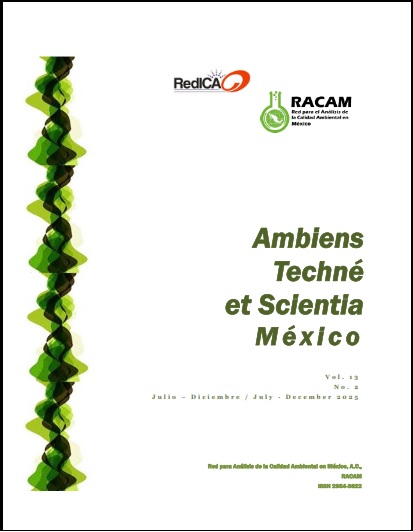Indicators of the water purification ecosystem service provided by coastal river wetlands in the state of Veracruz, Mexico
Keywords:
Aquatic insects, aquatic vegetation, biodiversity, environmental serviceAbstract
Ecosystem services are the benefits that humans obtain from ecosystems, generated by their interactions and proper functioning. Natural wetlands are no exception. In the case of the San Julián, Río Grande, and Río Medio wetlands in the municipality of Veracruz, Mexico, they were found to comply with the pollutant purification service. The Río Grande (RG) receives water from industrial and municipal sources and had an ammonium removal efficiency of 92% and a phosphorus removal efficiency of 38%. In this river (RG), the number of insect families considered tolerant changed from 100% to 32%, and 32% were considered intolerant when the water quality went from very poor to fair according to the BMWP (Biological Monitoring Working Party) and BMWP-CR (Biological Monitoring Working Party modified for Costa Rica) indices. In the case of Río Medio, the water at site RM1 is considered to be of fair quality. As it receives different inputs of untreated and treated wastewater, it becomes of poor quality. As it flows through the wetlands in RM4, 37% of nitrogen compounds and 68% of phosphorus are removed from water. In the present study, aquatic insects were good indicators of the physicochemical conditions of the water and habitat, being reflected in the diversity, abundance, and tolerance level of the families present at the sites. Macroinvertebrates were useful for evaluating the purification function of water in river wetlands. Insects maintain biodiversity as a group, although the proportion of intolerant families varies when they are under pressure or strongly impacted by human activities in the region.
Downloads
Downloads
Published
Issue
Section
License
Copyright (c) 2025 Ambiens Techné et Scientia México

This work is licensed under a Creative Commons Attribution-NonCommercial 4.0 International License.



